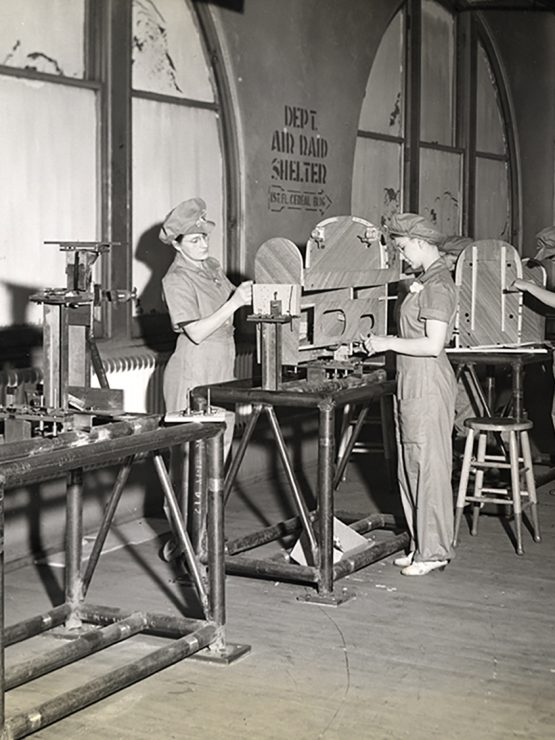They came from all walks of life. Margaret Evans was an artist’s model from Greentree. Mrs. Grace Winters was a widow with three small children. Mrs. Louise Hamilton came from a farm in Moon Run, accompanied by her daughter Louise. Olga Radosevich yearned to join her sister Sophie in the Women’s Army Auxiliary Corps, but she was too young. For now, she was stuck in Brentwood. All went to work at the H. J. Heinz Company, but they weren’t making pickles. They built airplane parts.
They were just a few of the women involved in a unique chapter in Pittsburgh’s World War II history. In 1942, a cluster of buildings at the Northside plant were turned over to making and assembling wooden parts for military airplanes, including seaplane floats, fuselage parts, and most prominently, wings for the Waco CG-4 glider.
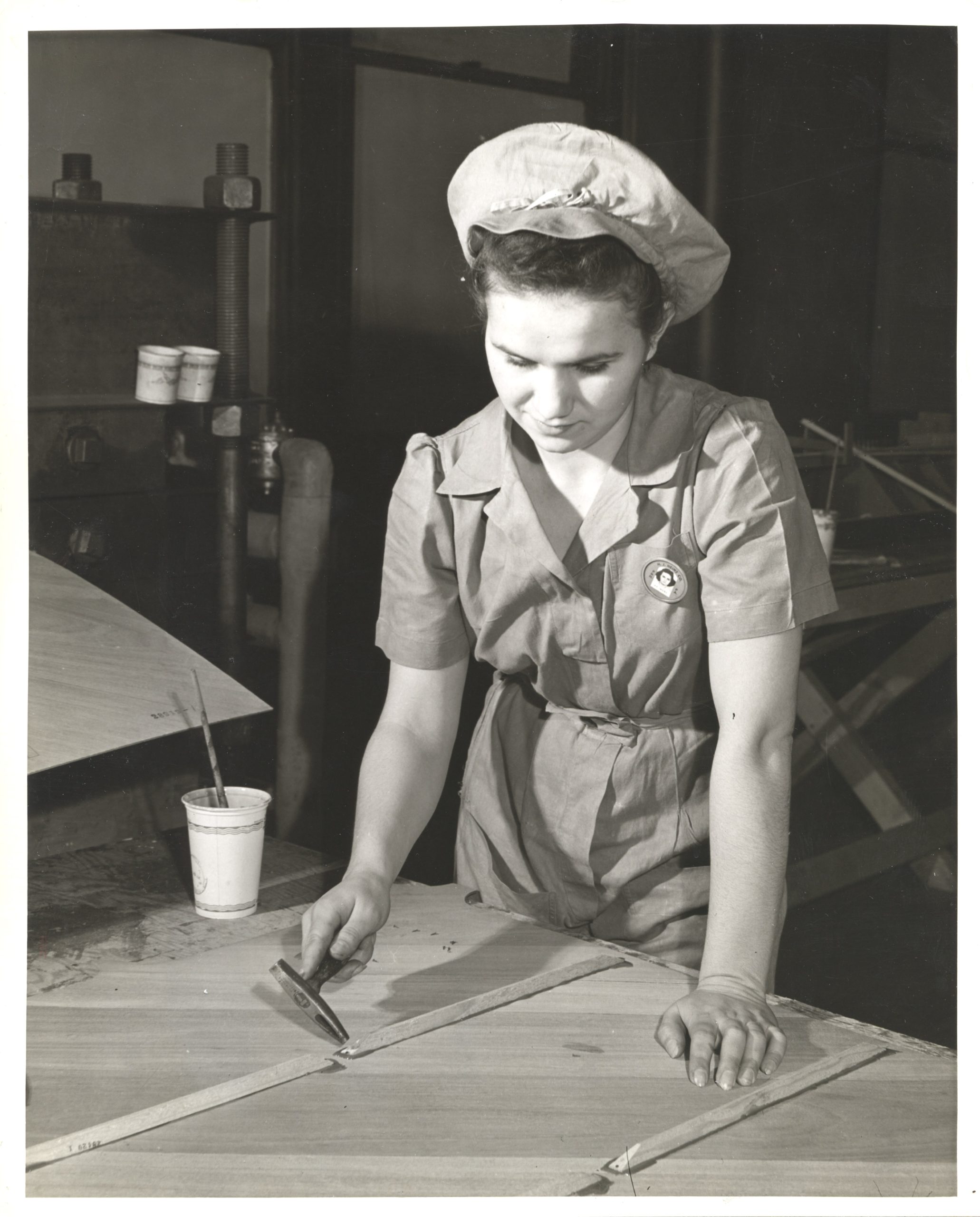
From Pickles to Planes
The women joined a collaboration between two Pittsburgh companies that was years in the making. Not content with producing food after Pearl Harbor, the H. J. Heinz Company sought other ways to contribute to the war effort. To do so, they partnered with the Gardner Display Company. Run by William and Mary Gardner, this exhibition design and fabrication firm located in Pittsburgh and Latrobe, Pa., was one of the biggest in the country. They produced displays for World’s Fairs, auto shows, parades, and department store windows. Gardner Display created the Heinz pavilion for the 1939 World’s Fair, including an animatronic, six-foot tall “Tomato Man” who sang, spoke, and rolled his eyes.
Based on past collaboration, the two were natural partners and marketed their defense interest together. Henry “Jack” Heinz, grandson of founder H. J. Heinz, was keen on aviation, so the company looked for contracts related to airplane components. They tried making experimental seaplane floats, with limited success.
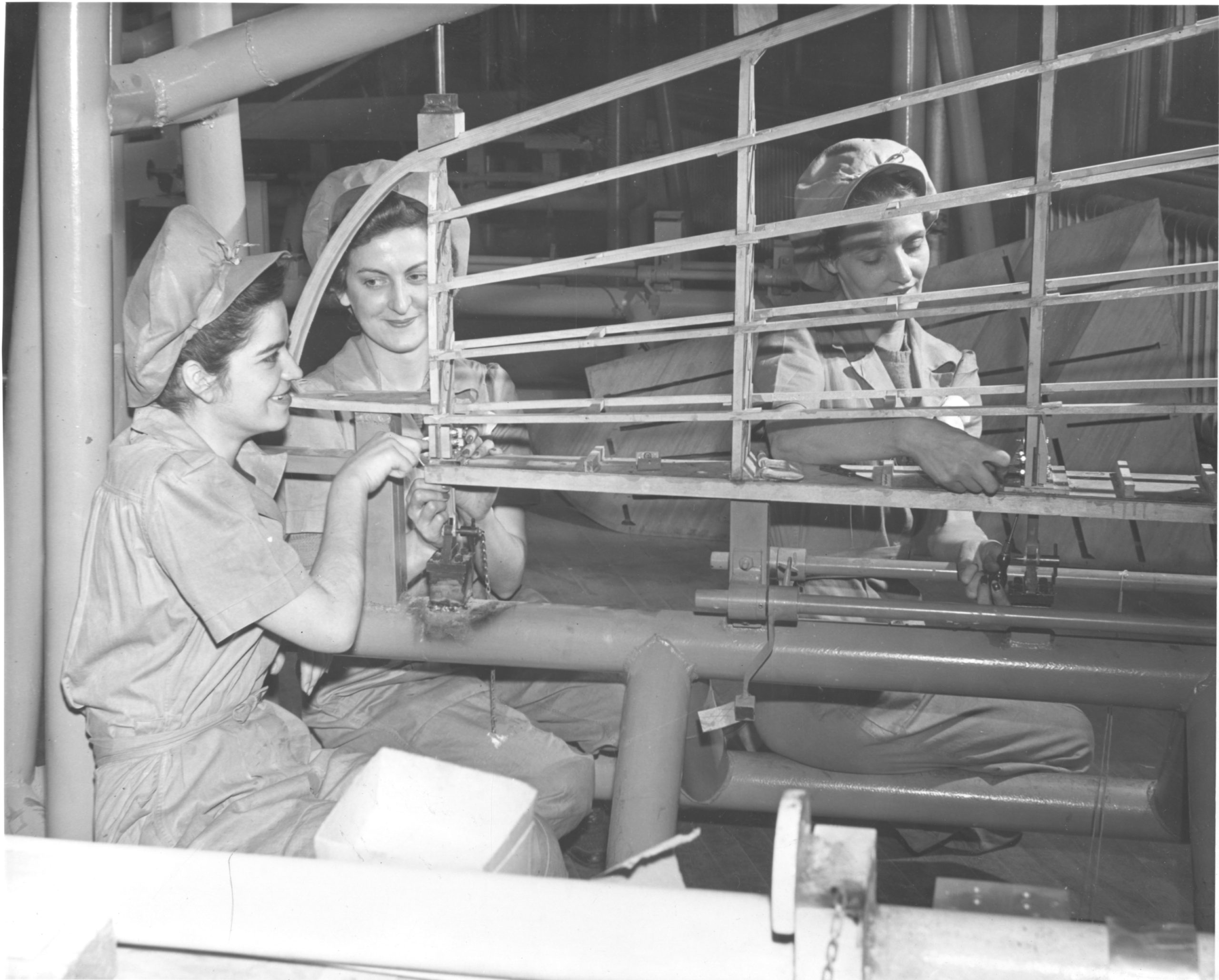
Then in 1942, the U. S. Government began seeking subcontractors to produce parts for a national U. S. glider program. Heinz and Gardner Display answered the call and received a contract to make glider wings. They were assisted by another local asset, Mt Lebanon native Augustine “Gus” Haller, a nationally recognized glider expert who had studied the operation of gliders in Germany before the war. (Germany pioneered glider technology and used them during the invasion of Poland, igniting World War II n 1939. Such use prompted the U. S. Government to take another look at gliders, something that the military had not seriously considered before.)
Women Can Build Planes
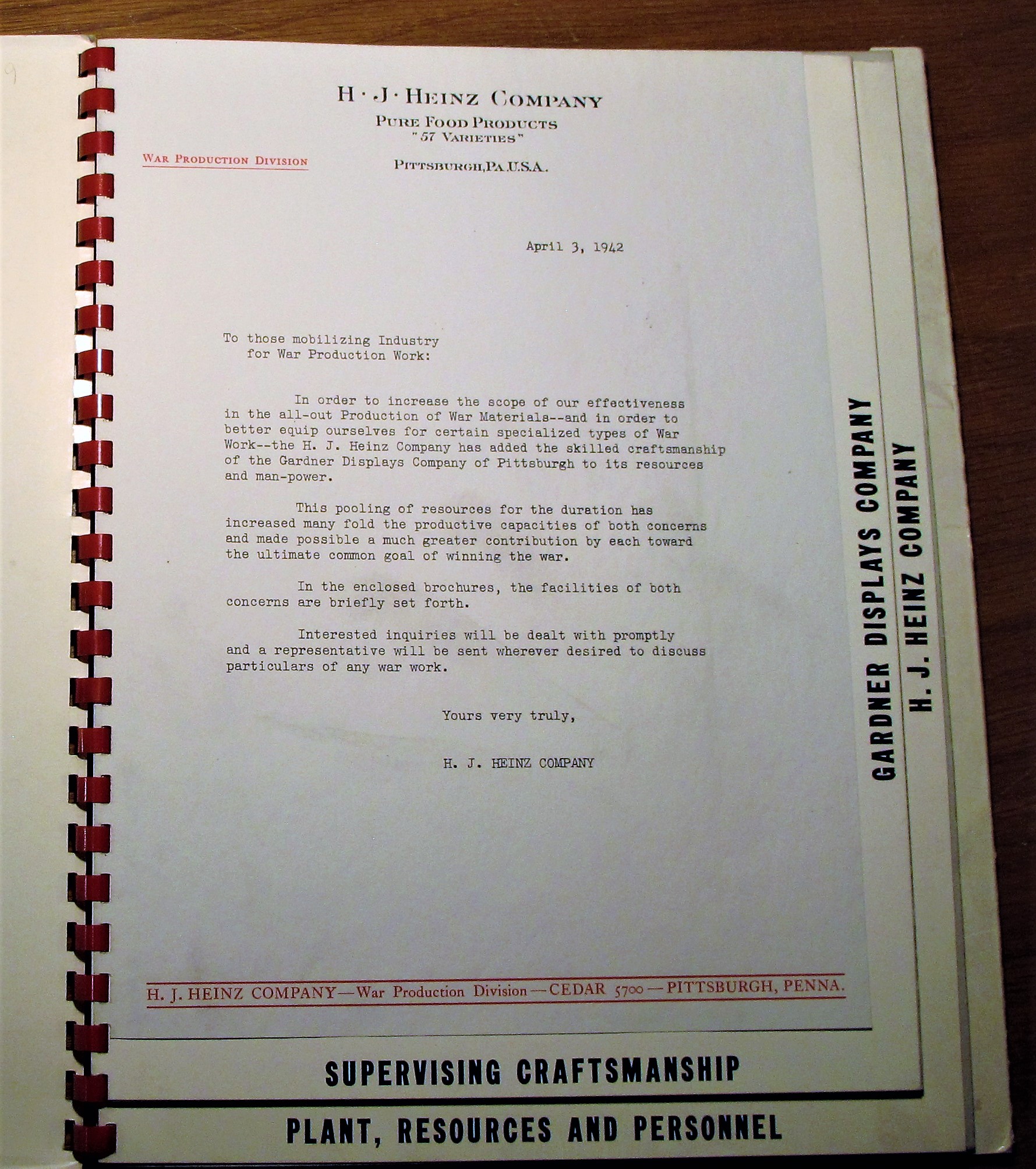
From the start, Heinz was warned that much of the new work force for this project would have to be women, since so many men were being lost to the military. U.S. interest in gliders came late, arising after major aircraft companies were already fully committed to other defense contracts. So, an odd assemblage of manufacturers, from the Ford Motor Company to makers of furniture, refrigerators, and, yes, pickles, were recruited to the cause. They needed to get creative fast, and that included recruiting and training women.
By the spring of 1942, schools such as Pittsburgh’s South Vocational High School began teaching women how to make airplane parts out of wood. “Women can build airplanes,” insisted Gus Haller, one of the teachers overseeing a class of 50. They just had to unlearn “a lot of misconceptions they had about airplanes.”i (Women were not dissuaded by such talk and demand for the course was heavy.) In fact, Pittsburgh Public Schools added general Aeronautics courses to their 12th grade curriculum by February 1942, reflecting the need for a populace to understand more about the topic, whether they were destined to fly combat missions overseas, spot aircraft for local civil defense efforts, or make airplane parts in local factories.
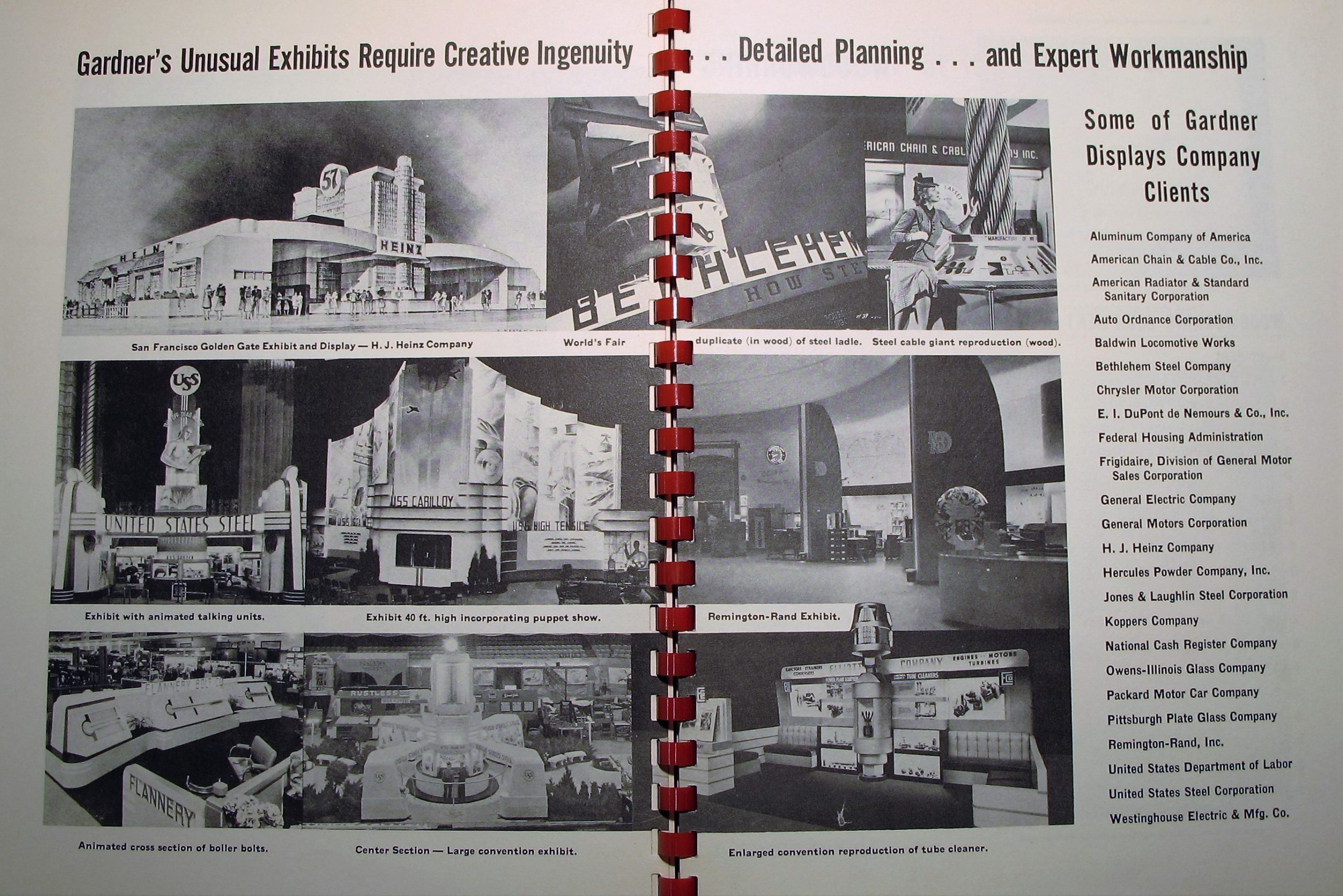

Making Gliders at Heinz
Women who joined the glider project faced challenging working conditions, with blacked out windows, color-coded I.D. badges and limited access to certain parts of the facility. Officially, they were not supposed to tell anyone outside the plant the details of what they were doing. No one knew where the finished parts were sent once work was completed. But it was difficult to keep the secret within Heinz, and general news stories featured the company’s shift from “pickles to planes.”
Functioning in three shifts, workers sometimes got stuck onsite for extended periods of time, 16 to 18 hours, waiting for parts or supplies. The pace was fast, and injuries happened, caused mainly by the constant use of sanding and cutting tools. They constructed huge individual glider wings, more than 40 feet long, made of plywood over a steel frame, all covered with stretched canvas and coated with glue and paint. After long days on the job, the women were coated with the same substances. Workers at similar plants in other cities recalled going home with a layer of adhesive on their hands, eyebrows, fingernails, or any surface that wasn’t covered. But many found their jobs rewarding. Mrs. Grace Winters noted “I’m working for the future of my children and democracy. I’m happy in this work.”
Glider workers only saw the finished product of their efforts once. On October 28, 1943, a completed Waco CG-4 glider was displayed at Heinz so that employees and their families could finally see what they had been building. Demonstrating the scale of their efforts, 18 “girl workers” posed under one of the enormous wings.
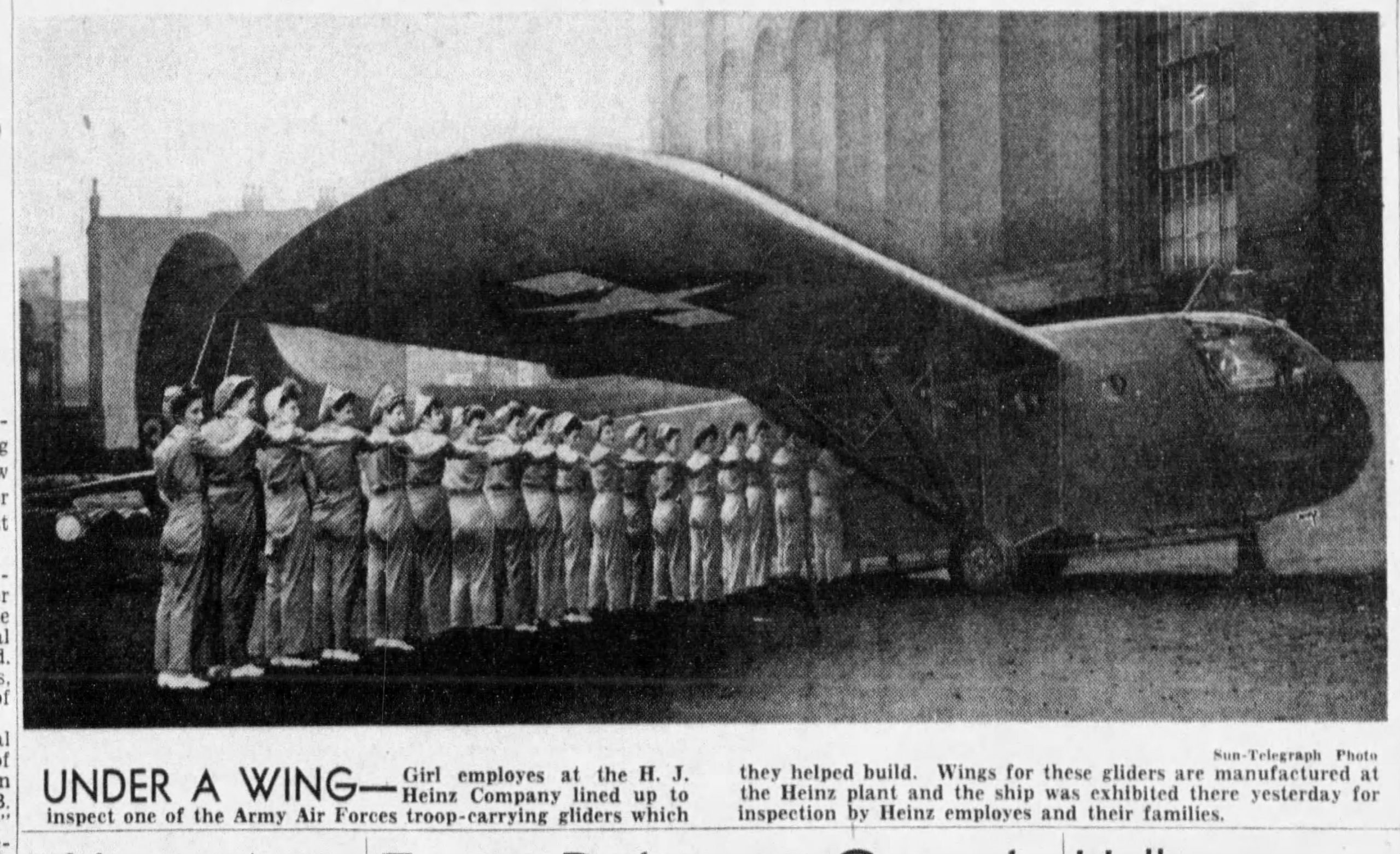
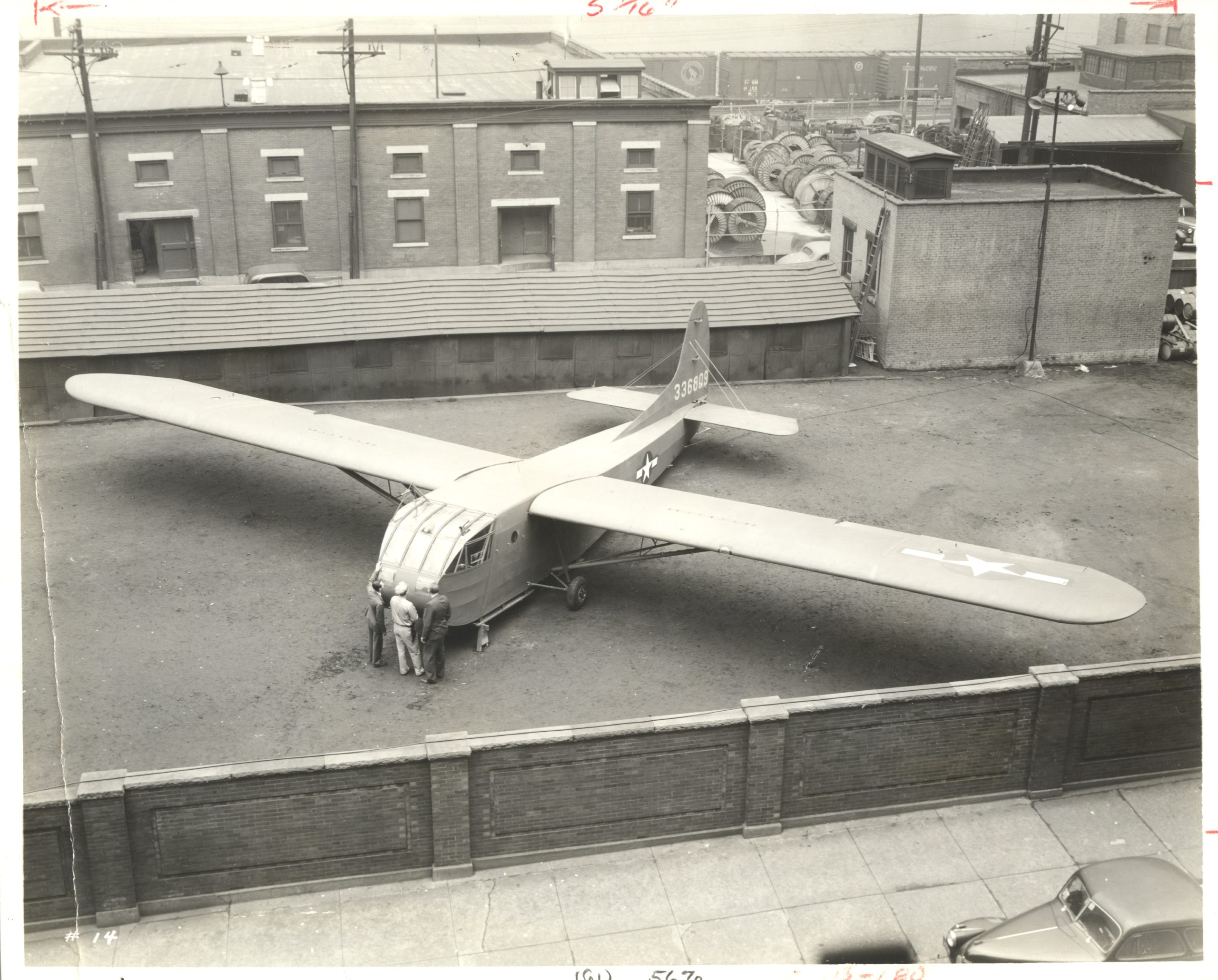
Meanwhile, A Wife Picks Up the Slack
The work at Heinz also illustrated how new defense projects impacted families beyond the job. While William Gardner headed to Heinz to focus on airplane parts, his wife Mary stepped up to maintain the family business. More than capable (she had been granted at least one patent under her name along with William), Mary forged ahead, securing Army and Navy contracts for things such as large-scale relief maps, pilot training displays, and mock “escape” cockpits. At one point, Mary supervised at least 35 women plus other employees.
And while Mary assumed her husband’s duties at work, the care of her children at the family’s Fox Chapel home fell on their grandmother. It was a pattern repeated across Pittsburgh, as multiple generations of women stepped up to help fulfill war needs at home as well as in area factories and corporations.
